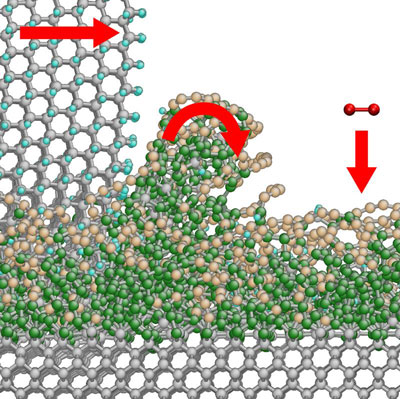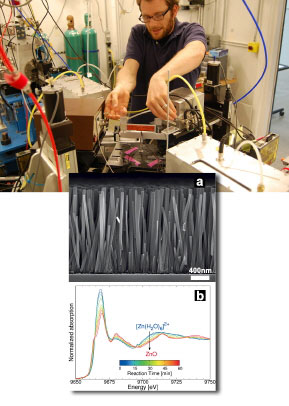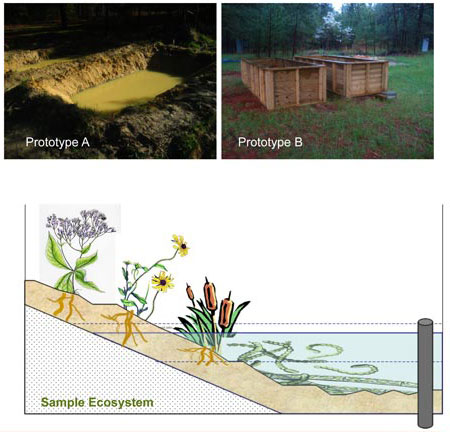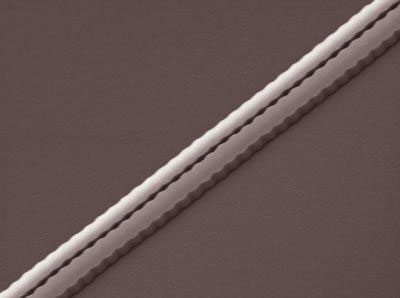Bundesregierung: Keine international abgestimmte Definition zu Nanomaterialien
Nach Angabe der Bundesregierung gibt es keine international abgestimmte Definition fuer Nanomaterialien.
Nov 29th, 2010
Read more
Nach Angabe der Bundesregierung gibt es keine international abgestimmte Definition fuer Nanomaterialien.
Nov 29th, 2010
Read moreDespite fruitful scientific achievements in the new materials industry, there is a lack of key technical patents in China.
Nov 29th, 2010
Read moreTECHBREAK is a new foresight initiative led by the European Science Foundation to identify the technology areas that could benefit the space sector. It goes beyond space-related technologies to bring in expertise from sectors where technology is evolving faster, ranging from photonics and nanotechnology to energy, nuclear propulsion and robotics.
Nov 29th, 2010
Read more Nach Jahrhunderten entschluesseln Freiburger Fraunhofer-Forscher den atomaren Mechanismus des Diamantschleifens.
Nach Jahrhunderten entschluesseln Freiburger Fraunhofer-Forscher den atomaren Mechanismus des Diamantschleifens.
Nov 29th, 2010
Read moreThe Institute of Microelectronics (IME), a research institute of the Agency for Science, Technology and Research (A*STAR), today announced a collaborative partnership with Stanford University in USA to develop nanoelectromechanical (NEM) relay technology to enable ultra-low power computation.
Nov 29th, 2010
Read moreThe Energy and Resources Institute (TERI), India and Deakin University, Australia signed a memorandum of understanding to announce the setting up of a Centre of Excellence, the TERI-Deakin Nano Biotechnology Research Centre in the field of Nano Biotechnology in India.
Nov 28th, 2010
Read moreResearchers from Taiwan have demonstrated the possibilities of fabricating n-type conducting ultrananocrystalline diamond films by Li-doping at very low temperature of about 570C by simply using a Li-based substrate material.
Nov 26th, 2010
Read more X-ray absorption near-edge structure (XANES) spectroscopy is well known as a versatile and powerful technique for examining the microstructure of everything from crystalline solids to amorphous materials, even liquids. Its extreme sensitivity also makes it an ideal tool for probing the kinetics of various chemical reactions in situ. Experimenters utilizing the U.S. Department of Energy Office of Science's Advanced Photon Source at Argonne recently demonstrated a new wrinkle for XANES that has opened a window on a poorly-understood technique for deposition of materials.
X-ray absorption near-edge structure (XANES) spectroscopy is well known as a versatile and powerful technique for examining the microstructure of everything from crystalline solids to amorphous materials, even liquids. Its extreme sensitivity also makes it an ideal tool for probing the kinetics of various chemical reactions in situ. Experimenters utilizing the U.S. Department of Energy Office of Science's Advanced Photon Source at Argonne recently demonstrated a new wrinkle for XANES that has opened a window on a poorly-understood technique for deposition of materials.
Nov 26th, 2010
Read moreFrame-by-frame observations of the ionization of argon atoms under extremely bright and energetic illumination could prove a boon to research.
Nov 26th, 2010
Read moreMaterials scientists from Case Western Reserve University and the Institute of Solid State Research in Juelich, Germany have produced particularly clear changes in the atomic structure of sapphire following deformation at high temperatures.
Nov 25th, 2010
Read moreDas Bundesministerium fuer Bildung und Forschung (BMBF) moechte die Anwendung von Quantentechnologien in der Informationstechnik vorantreiben. Dazu hat es jetzt rund 13 Millionen Euro fuer insgesamt vier Verbundprojekte zur Verfuegung gestellt.
Nov 25th, 2010
Read more 32 alternate realms, known as mesocosms, house individual types of nanoparticles as part of a research effort conducted by the Center for the Environmental Implications of Nano Technology (CEINT) based at Duke University.
32 alternate realms, known as mesocosms, house individual types of nanoparticles as part of a research effort conducted by the Center for the Environmental Implications of Nano Technology (CEINT) based at Duke University.
Nov 25th, 2010
Read moreA research team led by the Carnegie Institution's Department of Plant Biology developed a novel trick for identifying how pathogens hijack plant nutrients to take over the organism. They discovered a novel family of pores that transport sugar out of the plant.
Nov 25th, 2010
Read moreThe prestigious Business Innovation Awards 2010, which showcases the very best of UK innovation in science and technology, has announced the nine companies shortlisted for its three award categories for 2010 - emerging + nanotechnology, energy + environment, and digital connected world.
Nov 25th, 2010
Read more University of California - San Diego electrical engineers developed ultra compact, low power pulse compressor on a silicon chip.
University of California - San Diego electrical engineers developed ultra compact, low power pulse compressor on a silicon chip.
Nov 24th, 2010
Read morePhysicists from the University of Bonn have developed a completely new source of light, a so-called Bose-Einstein condensate consisting of photons. Until recently, expert had thought this impossible. This method may potentially be suitable for designing novel light sources resembling lasers that work in the x-ray range. Among other applications, they might allow building more powerful computer chips.
Nov 24th, 2010
Read more